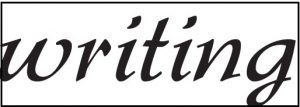How you up-level your business depends on your definition of success. For the sake of this post, let’s assume we’re talking about the kind of success that’s measured in dollars, i.e. making more of them rather than less. Here are three ways you can take your business from small fish to big fish.
- Collaborate with Partners
- Go Where the Money Is
- Create a Source of Passive Income
Whether they’re going the same place you are, or you’re passing through the same orbit for a short period of time, find business partners who can help you take your business to the next level. Copywriter Peter Bowerman is a big advocate for copywriters partnering-up with graphic designers. He even wrote an e-book on the subject called Profitable By Design: Tapping the Writer/Designer Partnership Goldmine. In it he describes how great it is for a client when a graphic designer goes into a meeting and says, “Yes, I can design this for you. Have you thought about the writing? If you like, I can contact my copywriter partner and take care of all of this for you.” Clients love a one-stop shop solution.
Another example comes from an artist/photographer friend of mine who’s actively moving his “small fish” business into a “big fish” business. He’s found a niche providing a rotating artwork and photography service for medical offices and hospitals. He wants to expand in that arena, but he’s not sure how. One idea (that I just thought of and haven’t shared with him yet!) is to locate interior design firms that specialize in decorating medical offices and hospitals. He could become one of their vendors, and get them to sell him! Just like the example above where the designer sells the writer. (I’ll call him later to tell him.)
It’s possible that the reason you’re struggling to take your business to the next level is because you’re just not going where the money is. I’ll use myself as an example. I’m a B2B and marketing copywriter. In previous years, I networked in the small business/solopreneur circuit. I made some great connections, did a few small projects, but nothing big. Nothing that would lend itself to taking me from small fish to big fish (or at least a bigger fish). The amount of time I spent building relationships with this particular group did not translate into my preferred amount of income.
The lesson I learned? This was not my ideal target audience. So I had to re-think my marketing strategy to align with my business goals. I pivoted my focus from marketing copy for small businesses, to B2B and marketing copy for agencies and larger businesses (preferably with a technical or corporate messaging slant). Since embarking on this focus, I’ve landed some absolutely incredible projects with my ideal clients, doing my ideal kind of writing.
Figure out where the money is within your particular expertise, and pivot your business (ideally without compromising your happiness) to gain a slice of that pie.
What could be better than making money while you sleep?! Or while you’re on vacation (a real vacation, no work allowed)? It’s all about the passive income. There are only so many hours in the day, and only so many of them you can spend working (especially if you have a partner, pets, children, hobbies, etc). You could create a situation like I mentioned above where someone else is selling your work for you, or you can create a product (e-book, online video training course, website/blog on which you can sell ad space, etc.) that doesn’t require your daily attention.
With a passive income source, you’ll be able to do the work that takes up hours of your time (and yes, the initial creation of the passive income product will take your time), AT THE SAME TIME your passive income source is making money too.
Those are the three ways I’m planning to up-level my business in the near- and far-term. Obviously they won’t happen overnight, but taking small steps towards one at a time (or simultaneously if that makes sense for your business and sanity) today, is going to make a huge impact on my business/income in the future. My list is by no means exhaustive, but hopefully the items mentioned are within accessible reach for us all.
How are you up-leveling your business? Give us some more ideas!

